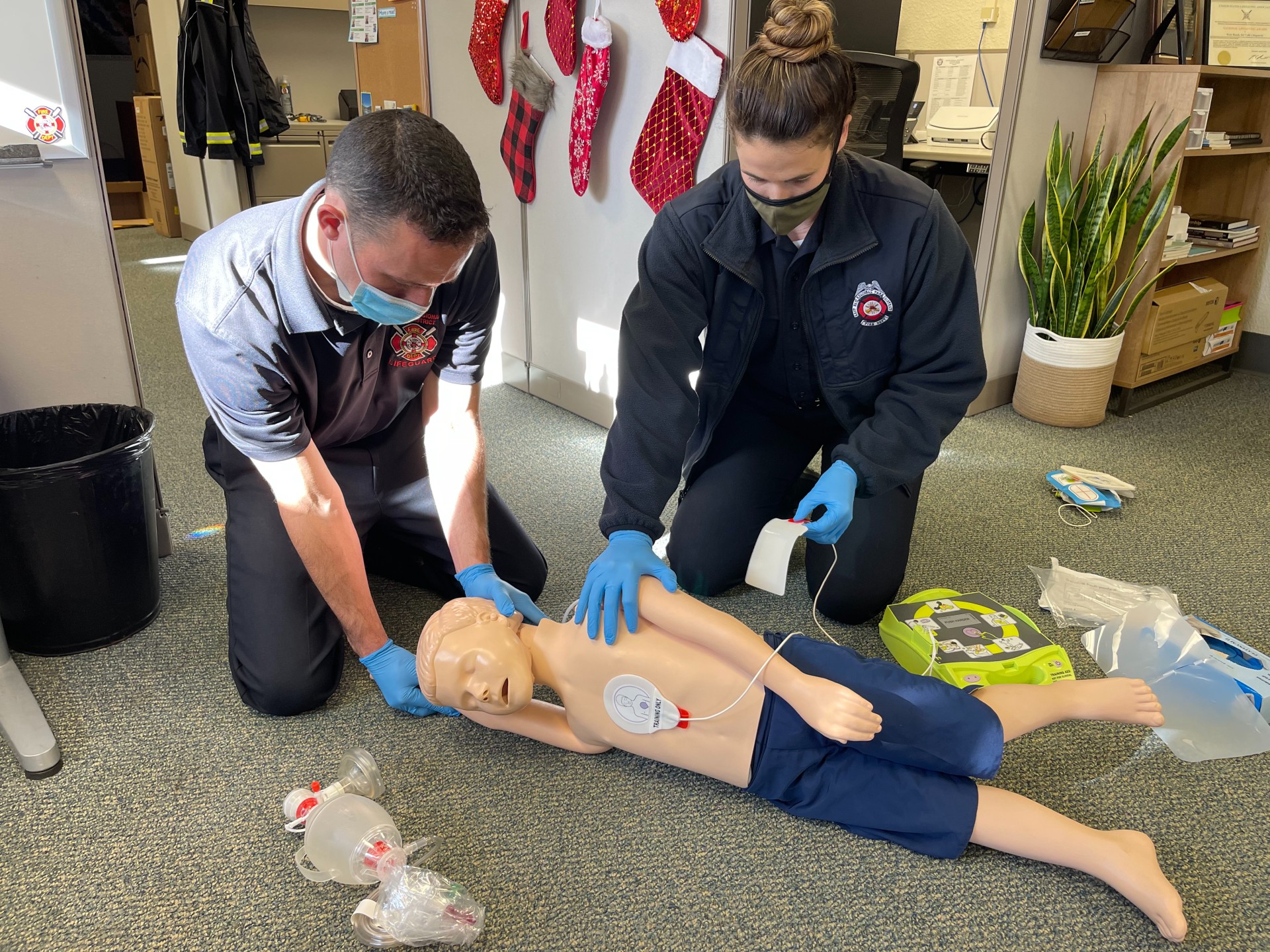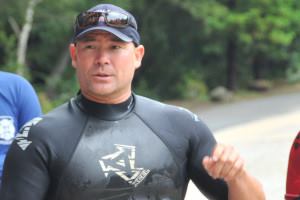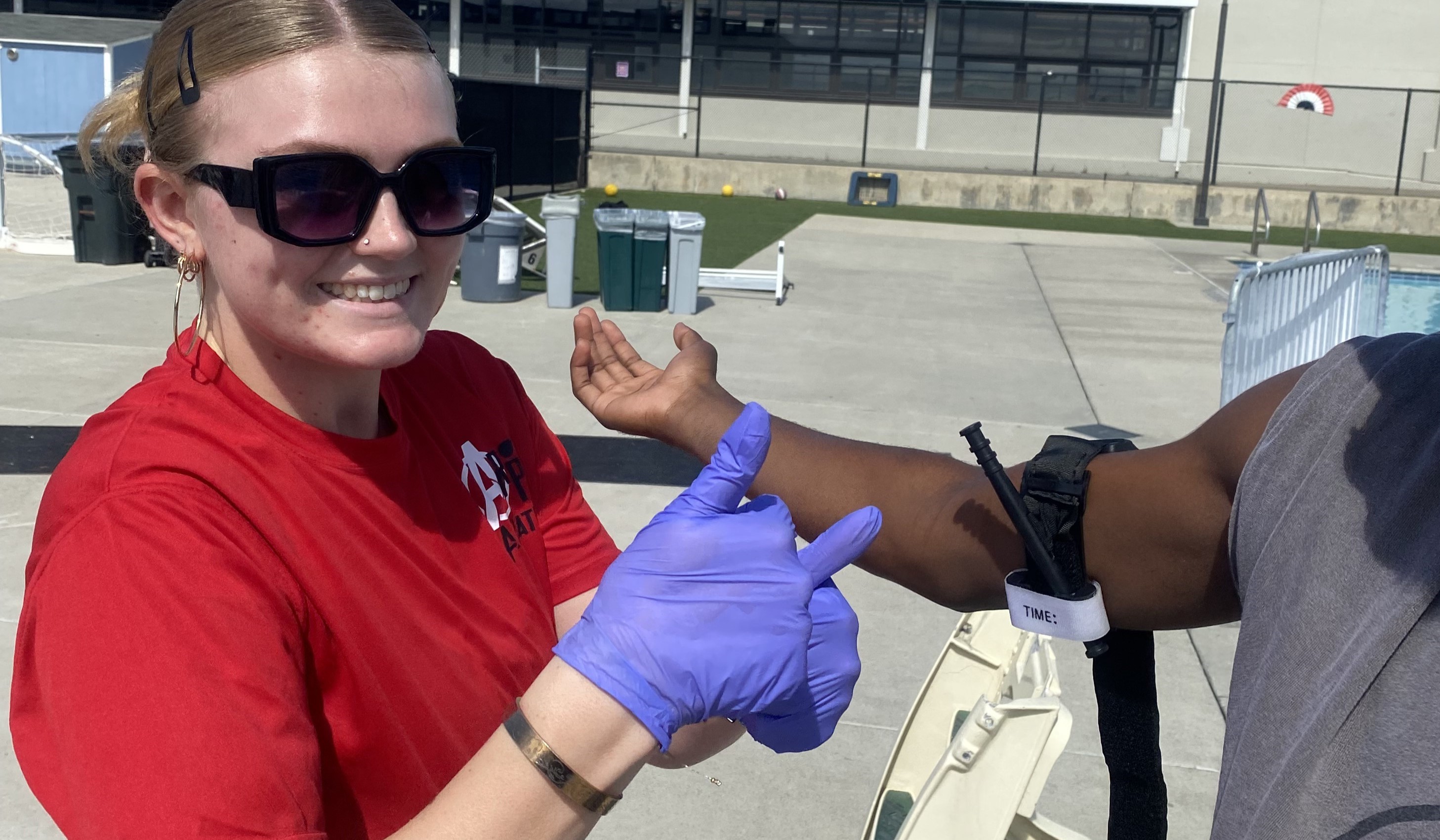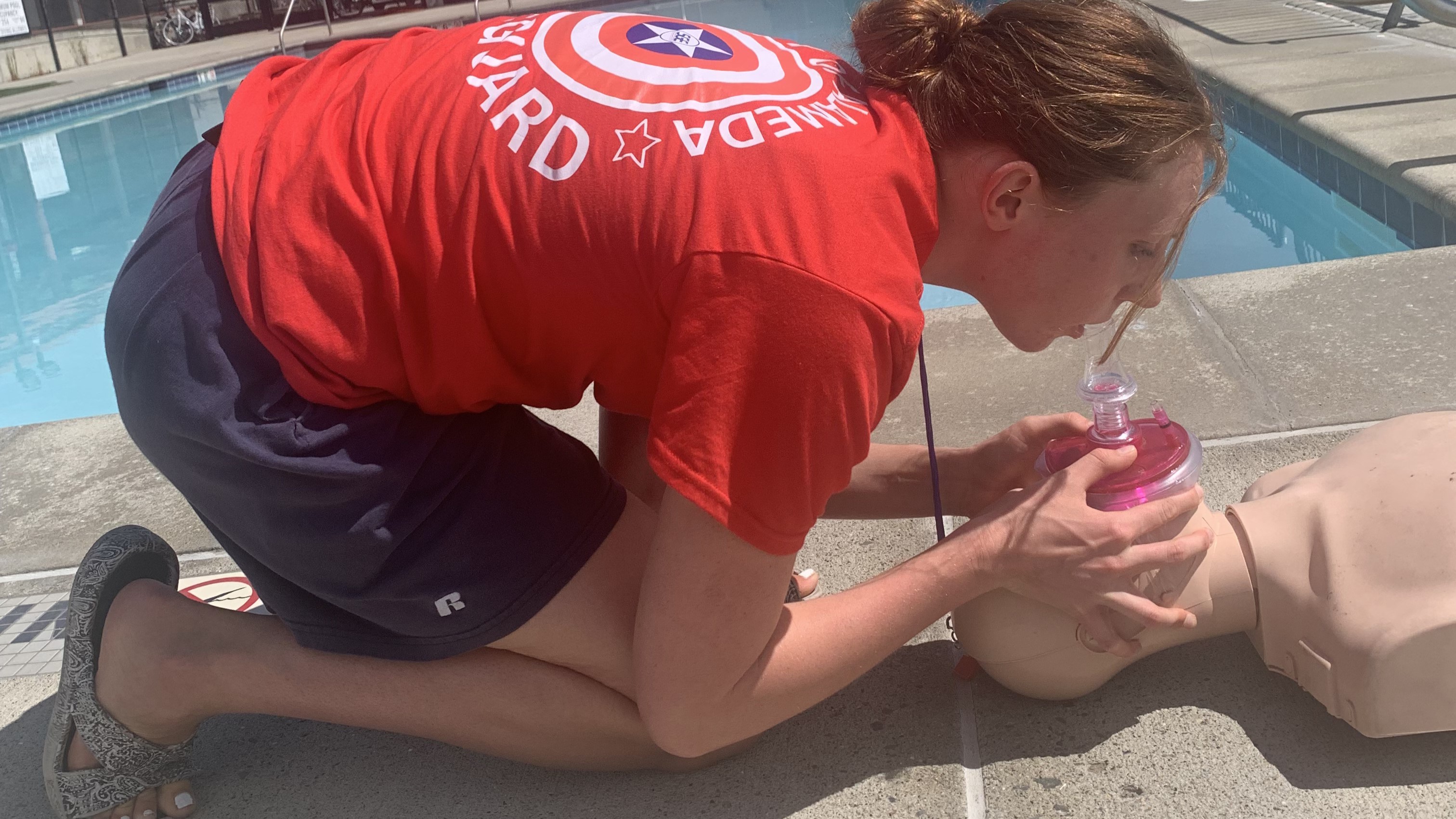CPR with AED use is the last line of drowning defense. It means you’re providing care to an individual who is no longer breathing and doesn’t have a pulse. If lifeguards are the first to respond on the scene, there is a good chance the victim was pulled from the water, and that the victim is a child.
In these cases, the expectation of lifeguards is very clear — to provide adequate ventilations that deliver oxygen to the lungs and blood so that oxygenated blood can then circulate throughout the victim’s body. If necessary, the lifeguards will need to correctly attach the defibrillation pads and effectively shock the victim’s heart.
We’ll review in-service drills that focus on improving effectiveness, efficiency and uninterrupted care when equipment and rescue personnel switch positions. The emphasis will be on child CPR and AED use.
WET/DRY HAND OFF DRILL (4 rescuers): Scenario set-up: Rescuers 1 and 2 (the Rescue Team) have rescued the victim, and Rescuers 3 and 4 (the Extrication Team) will extricate the victim from the water, then proceed to provide care. The victim is passive and submerged, with no breathing or pulse. Rescuers 3 and 4 have donned appropriate PPE prior to the extrication and they will provide the initial assessment, ventilations and compressions.
Objective: Rescue Team passes the victim to the Extrication Team. Extricate the victim, do an initial assessment, follow with ventilations and begin CPR.
Timing goal: 40 seconds to complete the objective. Once rescuers are proficient, move to these progressions, keeping the 40-second goal:
• 1-person Rescue Team and 2-person Extrication Team
• 2-person Rescue Team and 1-person Extrication Team
• 2-person Extrication Team (1 fully donned, 1 needs to don PPE)
• 2-person Extrication Team (both need to don PPE)
• 1-person Rescue Team, 1-person Extrication Team, 1-person Patient Care Team (needs to don PPE)
• 1-person Rescue Team, 1-person Extrication Team, both need to don PPE
RESUSCITATION MASK/BVM POSITION VENTILATION DRILL: Rescuer A is at the lateral position of the manikin and begins providing ventilations for a child. Rescuer B is opposite Rescuer A in the lateral position of the manikin. Rescuer A provides three ventilations using the head-tilt/chin-lift technique with a resuscitation mask. After three ventilations Rescuer B provides three ventilations.
Objective: Maintain an open airway on the victim while providing steady, uninterrupted ventilations and when rotating through rescuers. Once rescuers are proficient, progress to the variations:
• Ventilations with a resuscitation mask from a cephalic position, Jaw-Thrust (with head extension) Maneuver;
• Ventilations with a resuscitation mask from a cephalic position, Jaw-Thrust (without head extension) Maneuver;
• Ventilations with a BVM from a cephalic position, Jaw-Thrust (with head extension) Maneuver, with switching of rescuers between sealing the mask and giving ventilations;
• Ventilations with a BVM from a cephalic position, Jaw-Thrust (without head extension) Maneuver with switching of rescuers between sealing the mask and giving ventilations.
ONE RESCUER/TWO RESCUER CYCLE CHANGE DRILL: Pair up lifeguards, with the primary rescuer providing one-rescuer CPR to a child manikin. The secondary rescuer is staging, waiting to be cued to arrive on scene. Allow the primary rescuer to provide several cycles of CPR with a resuscitation mask before the secondary arrives.
Objective: Secondary rescuer arrives to assist in CPR; rescue team changes compression cycles from one-rescuer (30 to 2) to two-rescuer (15 to 2). Strive for effective change between cycle(s). Patient care is uninterrupted when a rescuer arrives or leaves. Once the team is proficient, rescuers switch roles. Once both rescuers are proficient in both roles, incorporate these variations:
• Secondary rescuer arrives with BVM for ventilations;
• An unassembled BVM is on scene with the primary rescuer. When the secondary rescuer arrives, the secondary rescuer will assemble the BVM which will be used for ventilations;
• Random Tandem (1-2-1-2…) First rescuer provides one-rescuer CPR. Second rescuer arrives, and they provide two-rescuer CPR. First rescuer leaves, and second rescuer begins one-person CPR. Third rescuer arrives, and they provide two-rescuer CPR. Second rescuer leaves, and third rescuer provides one-rescuer CPR, and so forth …
STRIP PLACE, FLIP PLACE DRILL: Rescuers can work in pairs or three-person rescue teams. The rescue team will bring an AED. The child manikin will wear a rashguard or sun shirt.
Objective: Rescuers remove the rashguard/sun shirt and place an AED pad on the victim’s chest and back.
Timing goal: 15-20 seconds to complete the objective. Once the rescue team is proficient, progress to these variations:
• Manikin is wet, and chest needs to be dried prior to placement of AED pads;
• One-rescuer CPR is in progress, rescuers arrive with the AED;
• Two-rescuer CPR is in progress, rescuer arrives with the AED;
• One-rescuer CPR is in progress, second rescuer arrives with AED.
As I said, CPR and AED use is the last line of drowning defense. If my team is responding to the scene where a pulseless child is pulled from guarded water, then I must question where the failure occurred when it comes to prevention: Was it in the policies, signage, swim tests, wristbands, parental supervision enforcement, surveillance, on-deck managerial supervision of staff, making enough preventative calls, taking enough preventative actions, a slow rescue response, not initiating a team emergency response? Or was it simply not informing the public enough how dangerous water can be and how quickly and silently drowning can occur?
These skills are imperative. With these drills, please remind your rescue team why we’re striving to build proficiency, speed, teamwork, and the ability act without hesitation.
Good luck and keep training.



